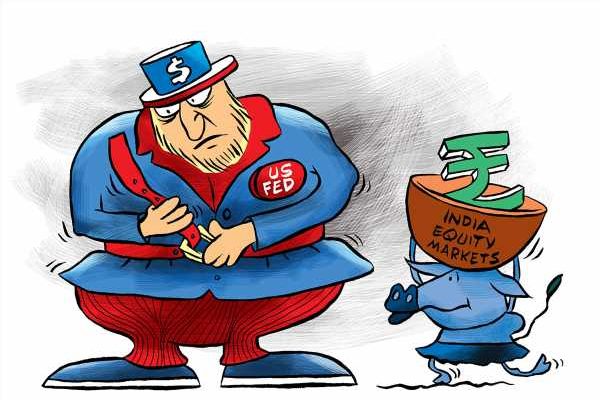‘The Fed rate will peak in the range of 5.1-5.3 per cent during the second quarter of CY23 and will most likely stay there for a while before rate cuts start in CY24.’
Monetary policy tightening by global central banks, especially the US Federal Reserve, has dented the performance of global equity markets.
Mahesh Nandurkar, managing director at Jefferies, in conversation with Puneet Wadhwa/Business Standard, says the markets will likely see the impact of higher rates through the next six months and possibly by the fourth quarter of calendar year 2023.
How do you see the global equity landscape pan out in CY23? What probability do you assign to the Fed slashing rates in the second half of CY23/early CY24?
A rate cut by the Fed this year appears quite unlikely. In the near term, the rates are likely to go up by 25-50 basis points.
The Fed rate will peak in the range of 5.1-5.3 per cent during the second quarter of CY23 and will most likely stay there for a while before rate cuts start in CY24.
Global equity markets will likely see the impact of higher rates through the next six months and possibly by Q4 of CY23.
They will slowly start to factor in the potential rate cuts only in CY24.
It has been a choppy ride for Indian markets thus far in CY23. Do you think they can now catch up with global peers, or remain laggards over the next few months?
While India was among the best-performing equity markets during CY21 and CY22, the underperformance towards late CY22 and early CY23 has brought relative valuations close to the historical average.
India now trades at a 60 per cent premium to the emerging market index, but that’s in line with historical averages. India is no longer a crazily expensive market.
Also, the global geopolitical situation continues to favour India.
In a nutshell, India’s under-performance is now likely behind.
Indian equities should catch up with global peers with a good probability of outperformance in the second half of this year.
Do you expect the government to announce populist measures in the backdrop of state elections and the run-up to the general elections next year? How will markets react to such announcements, if any?
I think the government has done an incredible job of staying away from populism and focusing on what is beneficial for the long-term growth of the Indian economy, which is greater investment and capital expenditure.
But as we move towards the 2024 national elections, it is quite natural for any government to focus more on social schemes as has always happened before any general elections in the past.
A minimum selling price increase for the kharif crop (likely in early June 2023) could be one such announcement to watch out for.
Also, keeping in mind the increased possibility of El Nino (implying deficient rainfall in India), some more than budgeted expenditure might happen in rural areas.
But these tweaks are unlikely to dent India’s growth story and the markets in any meaningful way.
Does the market expect more skeletons to tumble out of the Adani Group’s closet, or does it believe that the damage has been contained and the worst is over?
From the announcements made by various banks and financial institutions, it appears that there may not be any large impact on India’s banking and financial system stability.
We do not believe that India’s gross domestic product growth outlook gets impacted adversely.
What have been your key takeaways from the October-December quarter corporate earnings season?
The October-December quarter season of 2022-23 was largely on expected lines.
Overall, earnings estimates for FY23 and 2023-24 remained unchanged during the results season.
While some weakness in consumer discretionary (durables, food services, retail, etc) demand was seen, it was offset by better-than-expected margins across the board.
Banking and non-bank financial companies’ results were standout, driven by better net interest margin.
Automotive companies also saw positive surprises on the back of better margins as raw material pressure eased.
What are your other overweight and underweight sectors in the Indian context? Any dark horses?
We continue to like the domestic recovery plays and remain overweight on financials, industrial, capital goods, staples, and real estate.
We remain underweight on information technology services, pharmaceutical, cement, and consumer discretionary.
Property developers can be a dark horse, as the stock price movement has not kept pace with the fundamental improvement seen on the ground in terms of better volumes and pricing.
The sentimental overhang due to rising rates would be over soon and the sector should start outperforming.
Source: Read Full Article

